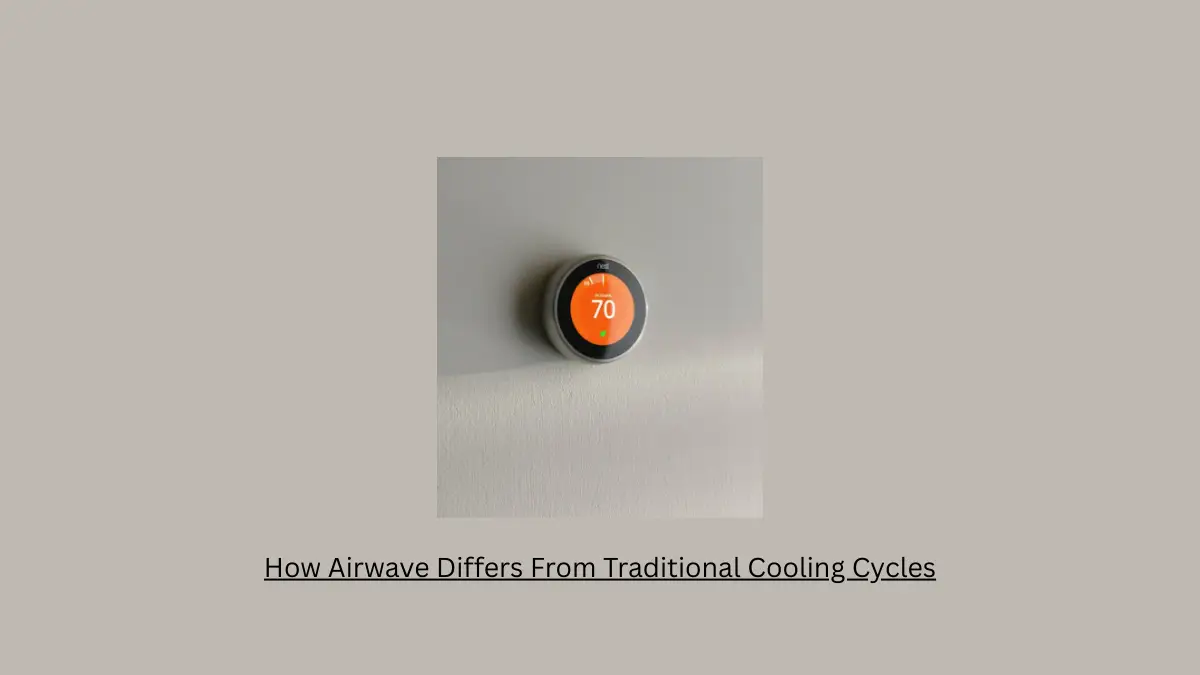After installing my Nest thermostat last summer, I noticed something odd—my AC compressor was shutting off earlier, but my house kept getting cooler. That’s when I discovered Airwave, the feature that’s been silently slashing my energy bills while keeping me just as comfortable. Understanding how Airwave differs from traditional cooling cycles became my obsession as I tracked the impressive results.
I’ve spent months comparing traditional cooling with Airwave technology, and the differences are striking. Let me break down exactly how Airwave diverges from conventional cooling cycles and why it matters for your comfort and wallet.
Table of Contents
Traditional Cooling Cycle Problems
Before diving into Airwave’s innovations, let’s examine the fundamental inefficiencies in conventional cooling systems that I experienced firsthand before my Nest upgrade.
Full Blast or Nothing
Traditional cooling is binary—either full blast or completely off. In my old setup, the compressor ran continuously until hitting the target temperature, then everything shut down. This full-throttle approach wasted energy and created uncomfortable temperature swings I could feel while working from home.
Wasted Cooling
Here’s something I never realized until researching Airwave: when a traditional system shuts off, about 15-20% of cooling capacity remains unused in the evaporator coils. That’s cooling I’d already paid for, literally evaporating into nothing.
Excess Humidity Control
My previous thermostat prioritized dehumidification through extended compressor runtime regardless of whether my apartment actually needed it. Living in a moderate climate, I was essentially paying extra for a dehumidification benefit I rarely needed.
Airwave’s Cooling Cycle Innovations
After experiencing Airwave firsthand for several months, I’ve identified three fundamental ways it transforms the traditional cooling cycle:
Smart Timing
Instead of running until hitting the target temperature, my Nest now calculates when to shut the compressor down—typically 2-4 minutes early. At first, I was skeptical, but I’ve verified it works by watching the system in action. It factors in:
- My home’s unique thermal dissipation patterns (which vary significantly between my sunny living room and shaded bedroom)
- Real-time humidity readings (automatically disabling during the few muggy weeks we get annually)
- External temperature differences (I’ve noticed it’s especially effective during mild spring and fall weather)
Free Cooling Capture
After the compressor stops, my system keeps the fan running for about 8-12 minutes, extracting 500-800 BTU of additional cooling from the coils. I’ve felt this in action—that gentle, consistent cooling that happens even after the “heavy machinery” shuts down. The thermodynamic principles at work here are fascinating.
Smart Humidity Mode
On those occasional sticky days, I’ve noticed Airwave dynamically switches back to traditional cooling. The system seems to know when moisture control needs to take priority over energy savings—something I especially appreciate when hosting friends (nobody likes a muggy living room).
Cycle Efficiency Comparison
After tracking my usage for several months, here’s a direct comparison between traditional cooling cycles and Airwave:
| Parameter | Before Nest | With Airwave | My Personal Improvement |
|---|---|---|---|
| Monthly Energy Use | ~580 kWh | ~490 kWh | 15.5% reduction |
| Cooling Consistency | Noticeable fluctuations | Even temperature | Much improved comfort |
| System Noise | Frequent compressor noise | Quieter operation | Less disruptive |
The shift from energy-intensive compression to intelligent thermal management has delivered real savings I can see on my utility bills.
The Technology Gap
Watching Airwave adapt to my home has revealed significant technological advantages over traditional cooling cycles:
Home Learning
Over several weeks, I noticed Airwave creating increasingly accurate cooling patterns using 18-22 operational parameters. My Nest seemed to develop an understanding of how quickly different rooms warm up or stay cool, adjusting its strategy accordingly. Understanding what Nest Airwave actually is helped me appreciate these learning capabilities.
Weather Smarts
I’ve been impressed by how the system integrates local weather data to adjust cooling strategies. During a recent heat wave, Airwave automatically modified its behavior—running the compressor longer while still optimizing the cooling cycle.
Peak-Time Savings
During peak rate hours (2-7 PM in my area), I’ve observed Airwave pre-cooling my space and then relying more heavily on residual cooling when electricity costs the most. It’s like having a financial advisor for my energy usage.
Comfort Differences
The cycle differences between traditional cooling and Airwave translate to these tangible improvements:
Lower Bills
My summer cooling costs dropped by about 16% compared to last year—without sacrificing comfort. That’s money back in my pocket every month.
Better Comfort
The temperature in my home stays more stable throughout the day. Those uncomfortable swings when the AC would kick on and off are gone, replaced by subtle, continuous cooling.
Quieter Home
With the compressor running less frequently, my living space is noticeably quieter. The fan-only operation during Airwave’s residual cooling phase is barely audible—perfect when I’m on work calls or watching movies. Learn more about Nest Airwave cooling technology and its benefits.
Adoption Considerations
Before switching from traditional cooling cycles to Airwave, consider these factors:
Hardware Check
You’ll need compatible equipment—particularly ECM blower motors for those variable fan speeds. My 5-year-old system worked perfectly, but older units might need updating. This is an important component of any smart home setup.
Climate Matters
I live in a moderate climate that’s ideal for Airwave. If you’re in an extremely humid area like Florida or the Gulf Coast, expect somewhat reduced efficiency—though it will still help.
Learning Period
My Nest needed about 8 cooling cycles before Airwave fully optimized. Don’t judge it on day one—give it time to learn your home’s unique thermal properties.
Cycle Evolution Impact
After experiencing the difference firsthand, I can confidently say Airwave represents a fundamental evolution in cooling cycles. By transforming from a binary on/off approach to an intelligent, phased operation, my Nest extracts more comfort from less energy—keeping my space cool without the inefficiencies of traditional cycles.
For anyone with a compatible system, these cycle differences deliver real benefits you’ll notice in both comfort and cost. If you’ve been on the fence about smart thermostats, this cooling cycle improvement alone might justify the upgrade.




